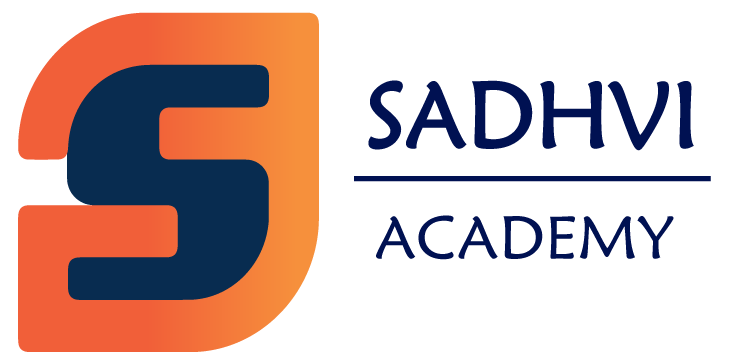Best Full Stack Data Science Course
Best Full Stack Data Science Course in Coimbatore
Sadhvi Academy offers the Best Full Stack Data Science Course in Coimbatore, providing a comprehensive and immersive learning experience that covers the entire spectrum of data science. Our program seamlessly integrates Python programming, Data Analysis, Machine Learning, and Data Visualization, ensuring students acquire a versatile skill set. Taught by industry experts, the course emphasizes hands-on projects, real-world applications, and personalized guidance, empowering participants to master both the foundational and advanced aspects of data science. Join Sadhvi Academy for a transformative journey that prepares you to excel in the dynamic world of Full Stack Data Science, equipping you with the expertise to tackle complex challenges and drive innovation
Key Features

Gain In Demand Skills

Certified Trainers

Hands-on Learning

Placement Assistance

Industry Aligned Curriculum

Flexible Learning Options

Supportive Learning Environment

Affordable
Fees
Advantages Of Choosing Data Science at Sadhvi Academy
Discover the pinnacle of Full Stack Data Science education along with Sadhvi Academy. Our program stands out for its comprehensive coverage, seamlessly blending Python Programming, Data Analysis, Machine Learning, and Data Visualization. Taught by industry leaders, this course offers hands-on projects, real-world applications, and personalized guidance, ensuring that participants not only grasp the fundamentals but also excel in advanced data science techniques. Join Sadhvi Academy to embark on a transformative learning journey, where you gain the skills to navigate the full spectrum of data science, empowering you to thrive in a rapidly evolving technological landscape.

Know About Data Science
Data science involves extracting valuable insights and knowledge from large and complex datasets using various techniques, including statistical analysis, machine learning, and data visualization. It encompasses the entire data lifecycle, from collecting and cleaning data to analyzing and interpreting patterns to inform decision-making processes. Data scientists use programming languages like Python and specialized tools to uncover meaningful information, making data science a crucial discipline across industries for informed decision-making and solving complex problems.
Who Should Opt For This Course?
- College Final Year Students: Computer Science or related discipline students in their final year of college
- Career Changers: Professionals looking to switch careers to data analytics and individuals who want to upskill
- Job Seekers : Individuals actively seeking employment in the tech industry.
- Domain Switchers: Professionals looking to switch from a different domain to data science & analytics
- Freelancers: Independent freelancers in the field of data Science & analytics and professionals transitioning to freelancing with a focus on data analytics to seek new projects and clients

COURSE SYLLABUS
- Introduction to Python
- Operators
- String, List and Tuple
- Set and Dictionary
- Conditional statements and loops
- Functions in Python
- OOPs
- Polymorphism and Encapsulation
- Exception Handling, File Handling and Debugging
- Modules & Packages
- Regular Expressions
- Decorators and Generators
- Comprehension in Python
1 – Introduction to Data Science
- Fundamentals of data science
- Data science vs. data analysis vs. data engineering
- Descriptive and predictive analytics
- The data science life cycle
- Working with different data types: structured, semi-structured, and unstructured
- Applications of data science across various industries
2 – Data Acquisition:
- Beautiful Soup
- Scrapy
3 – Data Manipulation:
- Numpy
- Pandas
4 – Data Visualization:
- Matplotlib
- Seaborn
- Probability concepts
- Statistical measures
- Joint probability
- Conditional probability and Bayes theorem
- Measures of location and variability
- Probability distributions
- Sampling methods
- Key statistical concepts
- Statistical hypothesis testing
1- Machine learning – Regression
- Machine learning basics and types
- Deep learning and recommender systems
- Regression concepts
- Univariate and multivariate linear regression
- Feature scaling
- Linear regression with scikit-learn
- Regularization (Lasso, Ridge, ElasticNet)
- Support vector regression
- Nearest neighbour regression
- Decision tree regression
- Feature engineering and categorical variables encoding
- Numerical variables transformation
- Feature selection (wrapper and intrinsic methods)
- Model evaluation metrics
- Dummy regressors
- Cross-validation
2 – Machine learning – Classification
- Types of classification problems
- Logistic regression
- Support vector machines
- Decision trees
- Naive Bayes
- K-nearest neighbors
- Ensemble learning
- XGBoost, LightGBM, and CatBoost
- Learning curves
- Model evaluation
- Dummy estimators
- Handling imbalanced class problems
- Hyperparameter optimization
3 – Machine learning – Clustering
- Unsupervised learning
- K-means clustering
- Hierarchical clustering
- DBSCAN clustering and customer segmentation
- Apriori algorithm and association rules
- Principal component analysis for dimensionality reduction
- Semi-supervised learning techniques
4 – Machine Learning Tools and Libraries
- Automated machine learning with Pandas Profiling and PyCaret
- RAPIDS (Using GPU for Fast Computations
5 – Big Data Tools and Technologies
- What is big data?
- Hadoop ecosystem
- MapReduce framework
- Apache Spark and its components
- Data preprocessing with scikit-learn
- Data modeling with scikit-learn
- Clustering with scikit-learn
- Gradient boosting with XGBoost
- Introduction to deep learning
- Neural networks
- Feedforward neural networks
- Backpropagation
- Convolutional neural networks
- Recurrent neural networks
LSTM networks
- Introduction to TensorFlow and Keras
- Building and training deep learning models
- Evaluating and optimizing deep learning models
Introduction to MySQL and Relational Databases
- Overview of Databases and Data Analytics
- Introduction to MySQL and its role in data analytics
- Understanding Relational Databases
- Installation of MySQL
- Basic MySQL command-line interface (CLI) commands
- MySQL Data Types
Data Types, Table Creation, and CRUD Operations
- CRUD Operations
- Creating a Database and Tables
- Primary Keys and Foreign Keys
- Inserting Data into Tables
- Retrieving Data using SELECT statement
- Data Manipulation and Aggregation
- Filtering Data using WHERE clause
- Sorting Data using ORDER BY
- Using Aggregate Functions (COUNT, SUM, AVG, MAX, MIN)
- GROUP BY clause for grouping data
- HAVING clause for filtering grouped data
- Advanced SELECT statements
- Combining multiple queries
Joins, Relationships, and Subqueries
- Understanding Relationships in Databases
- INNER JOIN, LEFT JOIN, RIGHT JOIN
- Joining multiple tables
- Aliases for Tables
- Practical examples of using Joins
- Understanding Subqueries
- Using Subqueries in SELECT, WHERE, and FROM clauses
Advanced Queries and Functions
- Working with string functions: CONCAT, LENGTH, UPPER, LOWER.
- Date and time functions: DATE, TIME, TIMESTAMP.
- Conditional statements: CASE WHEN.
- Views
- Stored procedures and Functions
Database Design, Normalization, and Advanced Functions
- Introduction to database design principles
- Understanding normalization and its importance
- Exploring different normalization forms (1NF, 2NF, 3NF)
Data Analysis and Optimization
- Introduction to Data Analysis in MySQL
- Generating Reports with GROUP BY and Aggregate Functions
- Exporting Data to CSV or other formats
- Understanding indexes and their role in query performance
- Creating and managing indexes
- EXPLAIN statement: Analyzing query execution plans
Introduction to Excel Basics
- Excel Interface: Cells, rows, columns.
- Entering Data and Basic Formatting.
- Saving and Opening Files.
- Cell Referencing: Relative, Absolute, Mixed.
- Inserting and Deleting Rows and Columns.
Excel Functions and Common Operations
- Basic Functions: SUM, AVERAGE, COUNT, MIN, MAX.
- COUNT, COUNTA, COUNTBLANK,
- Advanced Mathematical Functions: PRODUCT, MOD, SQRT, and FACT.
- Rounding Functions: ROUND, ROUNDUP, and ROUNDDOWN.
- Handling Common Cell Errors.
- Data Validation
- Conditional and Number Formatting
- Text to columns and Flash fill options
- Find and Search: Locating and Replacing Data.
- Paste Special: Copying with Formatting and Operations.
Text Functions and Formulas
- Text Functions: LEFT, RIGHT, MID, LEN, CONCATENATE.
- Text Manipulation: REPLACE and SUBSTITUTE.
- Using TEXT and VALUE Functions.
- Date and Time Functions: TODAY, NOW, DATE, TIME.
- Using Logical Functions: IF, AND, OR, NOT, ISERROR, ISNUMBER, ISBLANK, ISTEXT.
- SUMIFS Function, COUNTIFS, AVGIF, MAXIF and MINIF Functions.
Nested IF Statements for Complex Conditions.
- Making Logical Decisions with IF Function.
- Handling Errors with IFERROR Function.
- Basic Statistical Functions: MEAN, MEDIAN, MODE, and STDEV.
Data Analysis and Visualization
- Chart Types
- Working with Pivot Tables
Advanced Techniques and Automation
- Introduction to Macros: Recording and Running Macros.
- Basic Introduction to VBA: Variables, Loops, Procedures.
- Creating Interactive Dashboards using Advanced Excel Techniques.
Introduction to Power BI
- Overview of Power BI and its applications
- Installing Power BI Desktop.
- Getting familiar with the Power BI interface.
- Connecting to data sources (e.g., Excel).
Power BI Charts with Formatting
- Basic Charts: Creating bar charts, line charts, and scatter plots.
- Applying basic formatting to charts.
- Using data labels and legends.
- Introducing pie charts and donut charts.
- Creating maps: Plotting geographical data on maps.
- Using tables: Display Data in Tabular Format
- Applying conditional formatting to highlight data.
- Introduction to filters and slicers for interactive filtering.
- Utilizing cards to display key metrics.
- Waterfall charts, funnel charts, and combination charts.
- Implementing scrollable visualizations for large datasets.
- Tree maps
Advanced Visualizations
- Creating info graphics: Using custom visuals and shapes.
- Inserting objects like images and buttons.
- Applying bookmark actions for interactive storytelling.
- Implementing advanced analytics features
- Constructing a complete report: Combining visualizations, text, and images.
- Formatting and arranging elements for a polished report.
Power Query Functions
- PQ Text Functions
- PQ Date Functions
- PQ Number Functions
- File Handling Techniques in Power Query
Introduction to M Language Power Query
- Appending Files and Tables in Power BI
- Merging Tables in Power Query (Power BI)
- Fill down and Fill up
- Grouping
- Transpose
- Unpivot
- Data Types in Power Query (Power BI)
- Replace Errors and Values
- Keep Rows and Remove Rows
- Add, Remove, Goto Columns
DAX Expressions
- Introduction to DAX (Data Analysis Expressions) language.
- Measures, Calculated Columns and Calculated Tables
- DAX Formulas
Power BI Data Modelling & Integration
- Connecting to MySQL database.
- Data normalization: Understanding 1NF, 2NF, and 3NF
- Refreshing data in Power BI and scheduling automatic refresh.
- Advanced Data Modelling
- OLTP vs. OLAP: Online Transaction Processing vs. Online Analytical Processing.
- Incorporating Python Scripts Advanced Analytics.
Power BI Publishing
- Publishing to Power BI Service: Uploading reports to the cloud.
Program Fees
BASIC PROGRAM
- 1-to-1 Mode Class Training
- You will get a strong understanding of Fundamental Concepts
- Core Practical Training and Project Guidance Support with Latest Projects
- Daily Quiz & Assessments
ADVANCE PROGRAM
- 1-to-1 Mode Class Training
- Training sessions are Facilitates with Latest & Advanced Technology Concepts
- Industrial Projects + Job Preparation Training + Workplace Management + Communication Training
- Placement Assistance
Full Stack Data Science - Job Outlook
Demand
The demand for skilled data scientists is experiencing unprecedented exponential growth, driven by the increasing reliance on data-driven decision-making across all industries. This surge is evident in the job market scenario. As businesses recognize the value of data analytics, the need for proficient data scientists is only set to escalate.
Future Scope
The future of data science shines bright, fueled by several key factors: the exponential growth of data volume, the increasing adoption of AI and machine learning, and the continuous advancements in data science tools and techniques. This translates to a rapidly expanding landscape for data scientists in the years to come.
Industry Growth
The global big data market is projected to reach a staggering $300 billion by 2026, showcasing the significant growth potential within data-related fields. Data science, being the backbone of extracting valuable insights from this vast data, is poised to thrive within this expanding market, creating numerous career opportunities across diverse industries.
Job Opportunities
- Data Scientist
- Machine Learning Engineer
- AI Engineer
- Data Analyst
- Business Intelligence Analyst
- Market Research Analyst
- Financial Analyst
- Pricing Analyst
- HR Analyst
Frequently Asked Questions (FAQ)
No, learning Data Science is challenging but not difficult, catering to various experience levels, including beginners.
Data Science provides powerful tools and techniques for extracting insights from data, making it a highly sought-after skill for solving complex problems and making informed decisions.
Yes, fresher can secure jobs in Data Science as the demand for Data Scientists is high across industries.
No specific prerequisites. The course accommodates learners with varying levels of experience.
For Advance Course enrollees, Sadhvi Academy provides comprehensive job placement support, including counseling, resume help, mock interviews, networking, and assistance with potential employers.
Yes, upon successful completion, you get a certificate validating your Data Science proficiency.
Yes, you get lifetime access to course materials for ongoing learning.
Certainly! The training includes hands-on projects, allowing you to apply Data Science techniques to real-world scenarios and build a strong portfolio.
Inspiring education starts here Contact Us
Get ready to explore the realms of Best Data Science expertise. Reach out to us and let’s launch your extraordinary journey into the realm of Data Science market.


